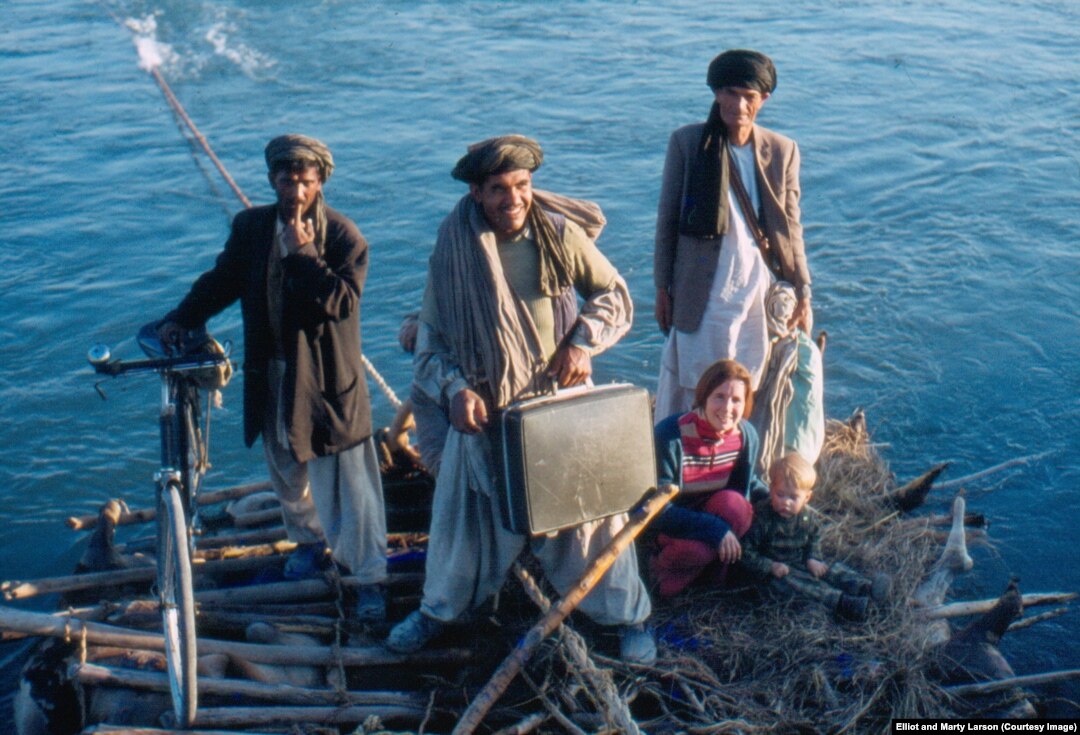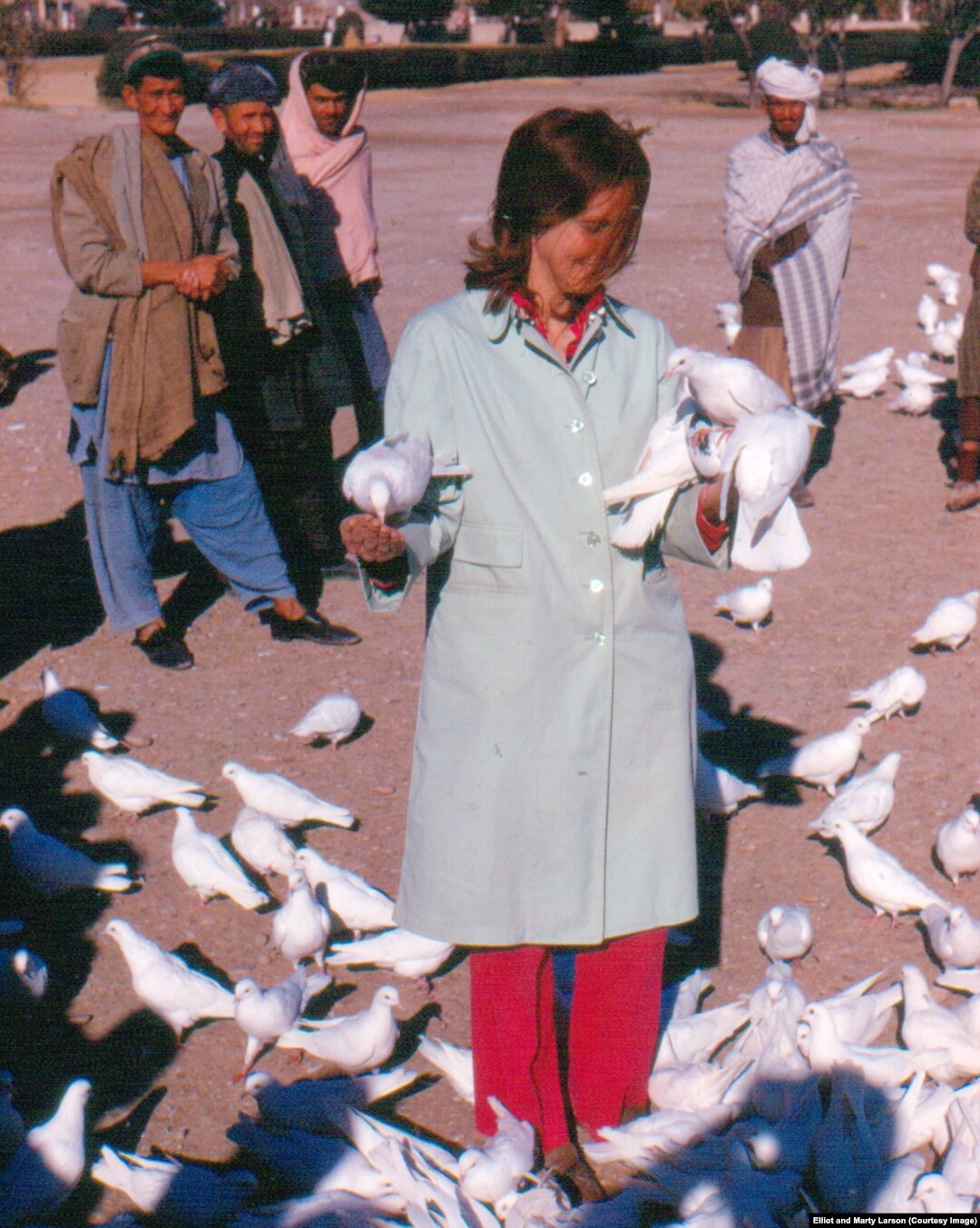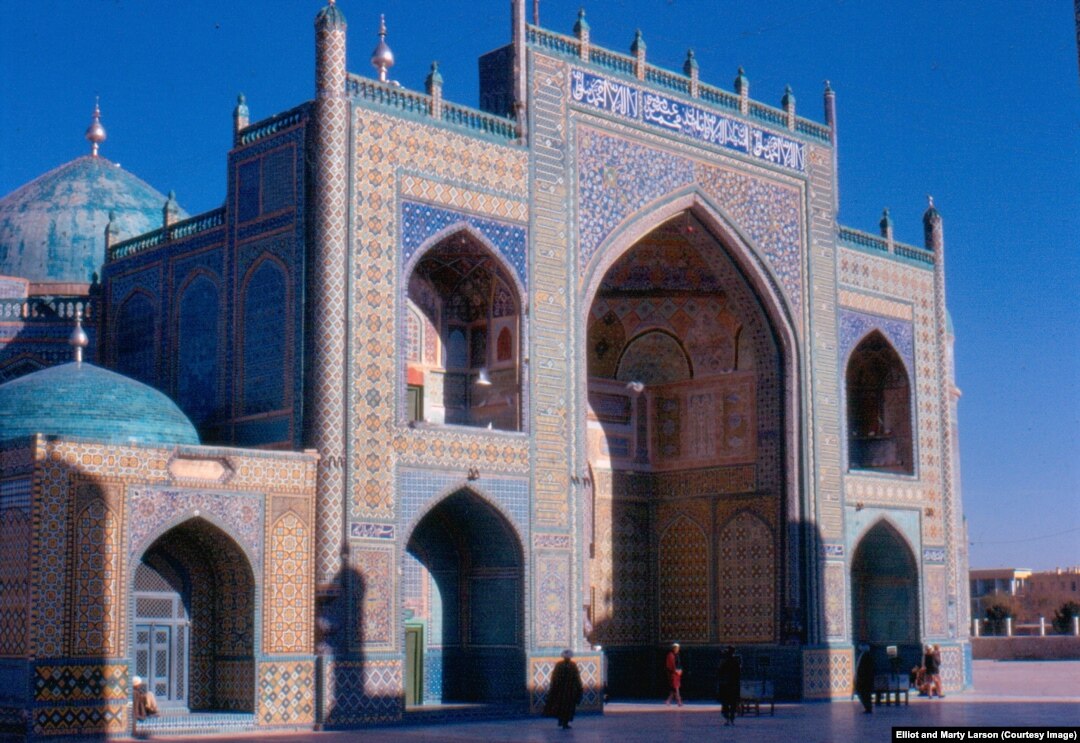Afghanistan Before The Wars

Marty Larson and her young son (bottom right) float on a raft made of inflated goat skins. The man carrying the briefcase was a neighbor of the Larsons in Jalalabad. He now lives in the United States.

Marty Larson feeds doves at the Blue Mosque in Mazar-e Sharif.

The Blue Mosque in Mazar-e Sharif. In 2011, the year the Larsons last returned to Afghanistan, four people were killed when a bicycle bomb exploded near the mosque.
A child being measured and weighed in a village clinic. The woman on the left is an American Peace Corps nurse working with an Afghan student nurse (right).
The children were being measured as a way of estimating their age, and weighed to judge nutrition.
Construction of new facilities at the Jalalabad Civil Hospital in 1973. The white building was a residence for female nursing students.
Local boys use sheep dung to play a game similar to mancala.
Elliot and his medical team were provided with a driver, pictured here filling up his Soviet jeep. Soviet influence in Afghanistan would became increasingly assertive until, in 1979, five years after the Larsons left the country, Soviet forces stormed the Kabul palace of communist President Hafizullah Amin.
A store displaying traditional wares. The 1979 assassination of President Amin and the chaos that followed would eventually lead to the Soviet occupation of Afghanistan, years of civil war, and the U.S.-led invasion in 2001.
The Kabul Gorge, photographed during a road trip outside Jalalabad. This road is one of the few places in Afghanistan that could be considered as dangerous then as it is now, with car crashes taking a tremendous toll.
Dr. Elliot Larson holds his son near the ruins of Shari-gogola (city of tears), which was destroyed completely by Genghis Khan. The young doctor taught microbiology in the Nangrahar Faculty of Medicine in Jalalabad from 1970-74. Elliot returned to Afghanistan between 2005 and 2011 before being instructed to leave by the U.S. government.
An elderly beggar whom the Elliots often saw on their street in Jalalabad.
Marty Larson, pregnant with the family's second son, on an outing to a park near Jalalabad.
Colleagues and friends of the Larsons on a trip to Nuristan. The region would later see some of the heaviest fighting during both the Soviet and U.S. military campaigns in Afghanistan and is now a no-go zone for foreigners.
A man with an animal-skin backpack, photographed during the outing to Nuristan. According to The Economist, the region is "so tough that NATO abandoned it in 2010 after failing to subdue it."
A rabab player who accompanied the family on the trip into Nuristan. The rabab is one of Afghanistan's national instruments.
A tree supported by a stack of stones in Nuristan.
Kuchis (nomads) on the road from Jalalabad to Kabul. Elliot says such a sight was common during his time there in the 1970s, but is increasingly rare today.
A statue of the Buddha in a cave complex near Jalalabad. Elliot notes that "at that time the remains were strikingly well-preserved." Statues at the site have reportedly been destroyed.
The Larson's 2-year-old son, playing with his dog Baba.
A traffic policeman after a rainfall in Jalalabad. When Elliot last saw Afghanistan, in 2011, he felt that despite the change in the security situation the country was much the same. "The way Afghans describe things is, 'new saddle, same donkey,'" Elliot says.
A horse-drawn cart that served as a kind of taxi in Jalalabad.
Girls playing on the streets of Jalalabad.
A game of chess being played by two Afghan doctors. The bearded American in the middle is Dr. Edwin Brown, who was visiting Elliot's Jalalabad facility. He died in the spring of 2015.
A street seller in Jalalabad. Elliot says the main difference he noticed when he returned to Afghanistan in recent years was that the country he remembered from the 1970s "possessed a sense of honor that now seems missing. I've heard Afghans say that, too."

